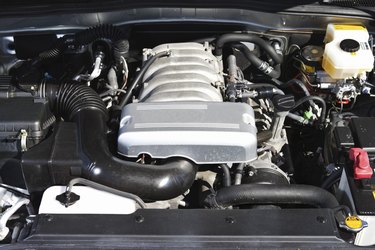
Oil pumps are a critical part of an automotive system. Lubricating oil is fed by a pump through pipes or ducts to different moving parts in an engine to slowdown wear and tear due to friction between metal parts and for heat displacement. The type of oil pump used in an automotive engine depends on the engine structure, the type of drive and its lubrication requirements. Lubrication systems vary in accordance with the use to which the automobile is put to, such as a normal passenger car or an off road vehicle.
Gear Pump
Gear pumps operate on the water wheel principle. They have two wheels to create high pressure in the oil pan and inject the oil into all areas that need lubrication. As the engine will be operating at high speeds, high pressure is required for the oil to reach all moving parts in the engine. Two interlocking wheels inside the pump draw oil from the pan and force it into relatively smaller area and build the required pressure. The movements of the wheels or gears and the sides of the pump are so designed that when high pressure is formed near the delivery nozzle, oil will not flow back into the oil pan.
Rotary Pump
The basic principle of the rotary pump is the same as in a gear pump. It is used to control the flow of oil into the engine by two rotating sprockets. The mechanism that pressurizes the oil and injects it into the system is slightly different. Instead of building pressure by increasing the amount of oil at the nozzle end, the rotors draw a quantity of oil into a compartment, which gradually becomes smaller in size and squeezes the oil and builds pressure near the injection nozzle. This is achieved with the use different teeth sizes on the rotor, which changes the size of the compartments while rotating.
Crescent Pump
The crescent pump is advantageous in situations where high delivery rate of oil is required, particularly at low engine speeds. The basic principle is the same; two rotating wheels build oil pressure near the delivery nozzle. Movements of the two wheels are in tandem as opposed to contrary wheel movements in the gear and rotary pumps. Due to size difference of the two wheels, oil is carried to the delivery nozzle and pressure created by gradually reducing the size of the containment area or the crescent formed between the two wheels.